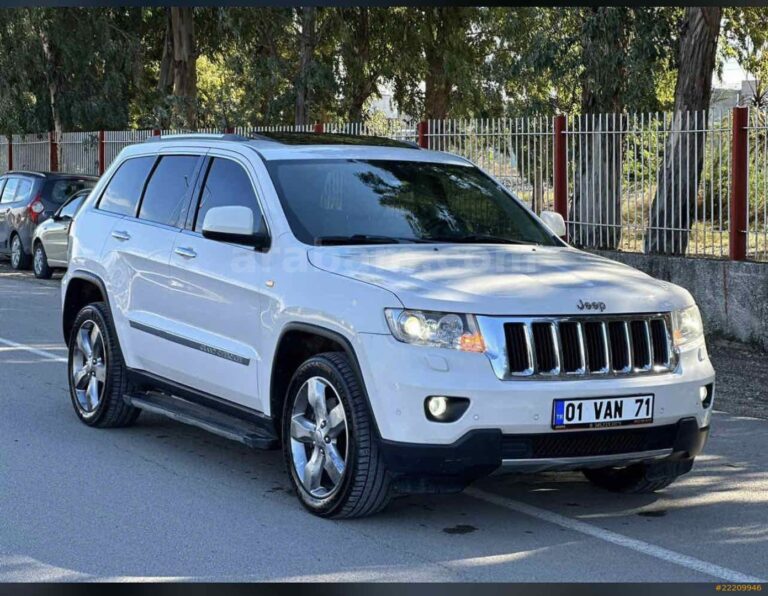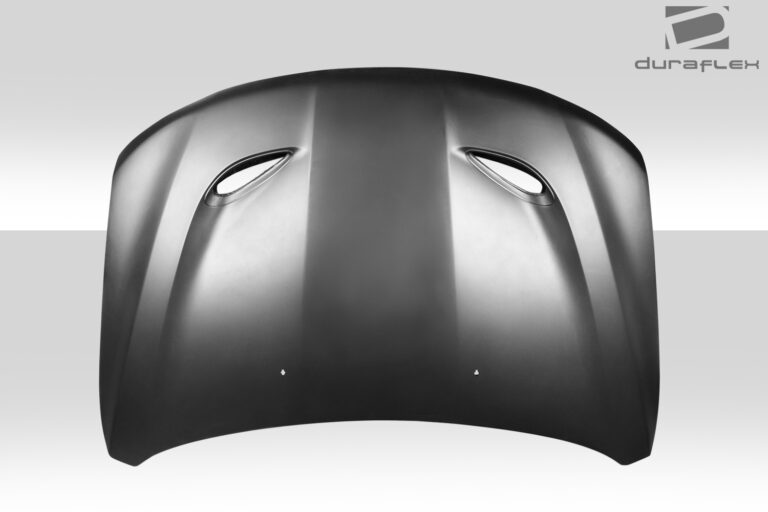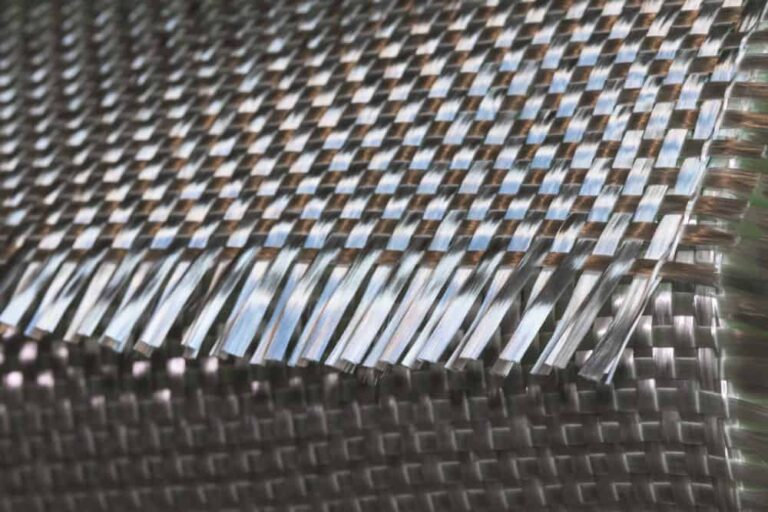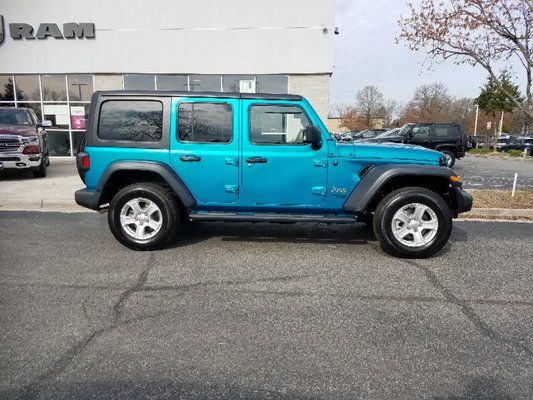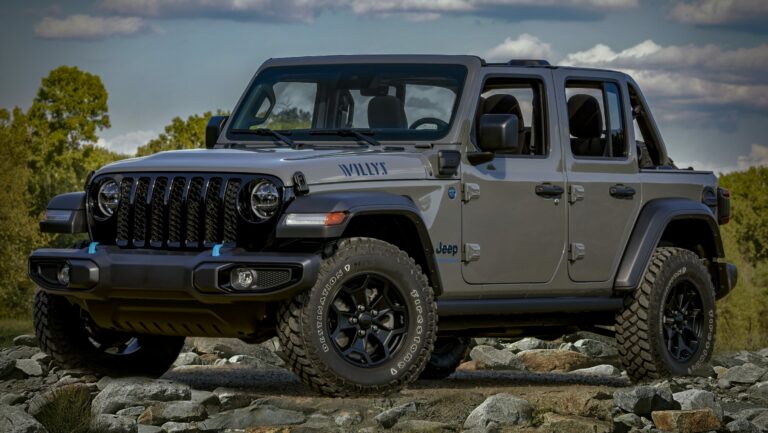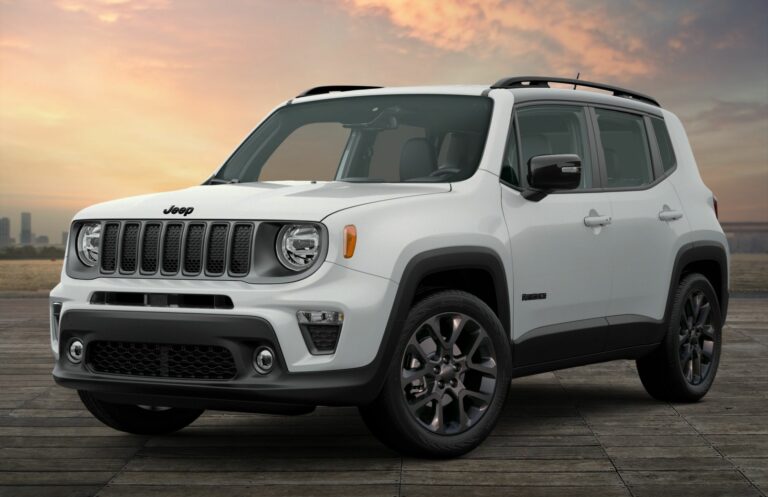2001 Wrangler Jeep For Sale: Your Comprehensive Buyer’s Guide
2001 Wrangler Jeep For Sale: Your Comprehensive Buyer’s Guide jeeps.truckstrend.com
An Enduring Icon: The Allure of the 2001 Wrangler Jeep
The year 2001 holds a special place in the hearts of Jeep enthusiasts. It marks a sweet spot in the production run of the legendary TJ series Wrangler (1997-2006), a vehicle that perfectly blends classic Jeep aesthetics with modern coil-spring suspension, offering a vastly improved ride quality over its leaf-sprung predecessors. For those seeking an authentic, capable, and highly customizable off-road machine that can also serve as a characterful daily driver, a 2001 Wrangler Jeep for sale represents an exceptional opportunity.
2001 Wrangler Jeep For Sale: Your Comprehensive Buyer’s Guide
This isn’t just another used car; it’s a piece of American automotive history, a symbol of freedom, adventure, and rugged individuality. Its iconic round headlights, seven-slot grille, and removable top evoke a sense of timeless adventure. But beyond its undeniable charm, the 2001 Wrangler TJ is renowned for its mechanical simplicity, robust engineering, and an aftermarket support system that is virtually unrivaled. Whether you’re a seasoned off-roader, a weekend adventurer, or simply someone who appreciates a vehicle with a unique personality, understanding the nuances of a 2001 Wrangler for sale is crucial to making an informed purchase. This comprehensive guide will navigate you through every aspect, from what makes it special to what to look for, helping you find your perfect trail companion.
Why the 2001 Jeep Wrangler TJ? An Enduring Icon
The TJ generation of the Jeep Wrangler is widely regarded as one of the best iterations of the legendary off-roader. The 2001 model year, in particular, benefits from several years of refinements since the TJ’s 1997 debut, but predates some of the later model year changes (like the Rubicon trim, which arrived in 2003, or the less desirable 42RLE automatic transmission that replaced the venerable 3-speed in later 4.0L models).
What sets the 2001 TJ apart? Primarily, it’s the coil spring suspension on all four corners. This was a revolutionary change from the leaf springs of the YJ (1987-1995) and significantly improved on-road comfort and off-road articulation without sacrificing durability. The 2001 Wrangler maintains the solid axle setup that serious off-roaders demand, offering superior strength and articulation compared to independent front suspension found in many modern SUVs.
Furthermore, the 2001 model predominantly features the venerable 4.0-liter AMC Inline-Six engine. This engine is legendary for its bulletproof reliability, ample low-end torque, and ease of maintenance. It’s a powerhouse that, with proper care, can easily achieve 200,000 to 300,000 miles or more, making it a highly desirable option for longevity. The combination of this robust engine, a simple yet effective 4×4 system, and the classic Jeep design ensures the 2001 Wrangler remains highly sought after on the used market. Its simplicity also means it’s relatively easy to work on for the home mechanic, and parts are widely available and often inexpensive.
Key Features and Specifications of the 2001 Wrangler
Understanding the core specifications of the 2001 Wrangler will help you identify the right model for your needs.
Engine Options:

- 2.5L I4 (Four-Cylinder): Standard in the SE trim. Produces around 120 horsepower and 140 lb-ft of torque. Adequate for light duty and better fuel economy, but can feel underpowered, especially with larger tires or on highways.
- 4.0L I6 (Inline-Six): The powerhouse, standard in Sport and Sahara trims. Delivers 190 horsepower and 225 lb-ft of torque. Highly regarded for its low-end grunt, reliability, and suitability for off-roading and daily driving. This is the preferred engine for most buyers.
Transmission Options:

- Manual:
- 5-speed NV1500: Paired with the 2.5L engine.
- 5-speed NV3550: Paired with the 4.0L engine. A robust and popular manual transmission.

- Automatic:
- 3-speed 32RH: Paired with the 4.0L engine. A durable, simple transmission, though it lacks an overdrive gear, impacting highway fuel economy and RPMs.
Transfer Case:
- Command-Trac NP231: Standard. A part-time 4WD system with 2Hi, 4Hi, and 4Lo settings. Highly reliable and capable.
- Selec-Trac NP242: A rarer option, offering full-time 4WD capabilities in addition to part-time, allowing it to be driven on pavement in 4WD.
Axles:
- Dana 30 (Front): Standard on all trims. Generally robust for stock or mild modifications.
- Dana 35 (Rear): Standard on most trims. Can be a weak point for serious off-roading, especially with larger tires and aggressive driving.
- Dana 44 (Rear): Optional on Sport and Sahara trims (often with the Tow Package). Highly desirable for its increased strength and durability. If you plan serious off-roading, a Dana 44 rear axle is a significant advantage.
Trim Levels:
- SE: Base model, typically equipped with the 2.5L engine, vinyl seats, and fewer creature comforts.
- Sport: Most common trim, often with the 4.0L engine option, cloth seats, and more standard features. A good balance of capability and comfort.
- Sahara: Premium trim, typically with the 4.0L engine, upgraded interior (often with unique cloth or optional leather), body-color fender flares, and more amenities.
- Apex, Columbia Edition, Freedom Edition, etc.: Special edition packages that added unique cosmetic touches and sometimes specific features.
Body Styles:
- Soft Top: Standard, offering the open-air experience.
- Hard Top: Optional, provides better insulation, security, and quieter ride. Many Jeeps are sold with both.
- Half Doors vs. Full Doors: Half doors offer a more open feel but less security and weather protection. Full doors are more conventional.
What to Look For: A Buyer’s Checklist for a 2001 Wrangler
Purchasing a 2001 Wrangler requires a diligent inspection, as these vehicles are often used hard, modified, or neglected.
- Frame Rust: This is the most critical inspection point. Jeeps are prone to rust, especially in the frame. Check thoroughly, particularly around the control arm mounts, skid plate, and the rear section near the bumper. Surface rust is common and manageable; severe rot or holes are deal-breakers unless you’re prepared for costly frame repair or replacement.
- Engine Condition:
- 4.0L I6: Listen for knocking, ticking (especially lifter tick, which can be normal or indicate wear), or excessive valvetrain noise. Check for oil leaks, particularly the rear main seal (a common, though not always critical, leak). Ensure no coolant mixing with oil.
- 2.5L I4: Similar checks, ensure it runs smoothly and doesn’t struggle excessively.
- Transmission & Transfer Case:
- Manual: Test all gears, listen for grinding, check clutch engagement.
- Automatic: Smooth shifts, no slipping, check fluid condition.
- Transfer Case: Engage 4Hi and 4Lo. Ensure it shifts smoothly into and out of all modes. Check for leaks around seals.
- Suspension & Steering:
- Inspect control arm bushings, tie rod ends, ball joints, and track bar for wear. Worn components contribute to "death wobble."
- Check shocks for leaks.
- If lifted, inspect the quality of the lift kit installation and components.
- Brakes: Check pad and rotor wear, brake lines for rust or leaks.
- Electrical: Test all lights, gauges, HVAC system, power windows (if equipped), and radio.
- Interior: Check for torn seats, damaged carpet, water leaks (especially from the soft top or door seals), and functioning seat belts.
- Tires & Wheels: Check tire wear pattern (uneven wear can indicate alignment issues or worn suspension components). Ensure tires are appropriate for the vehicle and modifications.
- Modifications: Be wary of poorly done modifications. A high-quality lift kit with proper steering and suspension geometry correction is good; a cheap "spacer" lift with stock components is not. Ask for receipts or details on modifications.
- Documentation: Ask for service records. Run a CarFax or AutoCheck report to check for accident history, flood damage, or salvage titles.
Ownership Experience and Customization Potential
Owning a 2001 Wrangler is a unique experience. It’s not a quiet, plush SUV. Expect wind noise, a firm ride, and less refined road manners than modern vehicles. However, these "quirks" are part of its charm.
- Daily Driving: It’s certainly capable as a daily driver, especially with the 4.0L engine. However, fuel economy is modest (typically 14-18 MPG), and longer highway trips can be tiring due to noise and the manual’s lack of an overdrive (for 3-speed automatic).
- Off-Roading: This is where the TJ truly shines. Its short wheelbase, excellent approach/departure angles, and robust 4×4 system make it incredibly capable on trails, rocks, and mud.
- Maintenance: TJs are relatively simple machines. Basic maintenance can often be performed by the owner, and parts are widely available and generally affordable from both OEM and aftermarket suppliers. There’s a vast online community eager to help with troubleshooting and repairs.
- Customization: The aftermarket for the TJ is enormous. From mild to wild, you can customize every aspect:
- Lift Kits: Ranging from 1-inch spacers to 6-inch long-arm systems.
- Tires & Wheels: Larger tires are a common upgrade, improving off-road capability and aesthetics.
- Bumpers & Armor: Steel bumpers, rock sliders, and skid plates protect the vehicle and provide recovery points.
- Winch: Essential for self-recovery off-road.
- Lighting: LED light bars, auxiliary lights for better visibility.
- Engine Performance: Headers, cold air intakes, re-gearing for larger tires.
- Interior: Seat covers, storage solutions, upgraded audio.
Customization can be a huge benefit, but always inspect the quality of the work.
Understanding the Market: Pricing and Value Factors
The price of a 2001 Wrangler for sale can vary wildly, reflecting its condition, modifications, and desirability.
Factors Influencing Price:
- Condition: The single biggest factor. A rust-free frame, well-maintained engine, and clean interior command a premium.
- Mileage: Lower mileage generally means a higher price, though condition often trumps raw numbers for these durable vehicles.
- Engine: 4.0L models consistently sell for more than 2.5L models.
- Transmission: Preference varies, but a well-maintained manual can be highly sought after.
- Trim Level: Sahara and Sport models (especially with the 4.0L and optional Dana 44 rear axle) are more desirable.
- Location: Jeeps in rust-free climates (e.g., Southwest US) will typically be more expensive due to their better condition.
- Modifications: High-quality, desirable modifications (e.g., a well-installed brand-name lift, quality armor, upgraded axles) can add value. Poorly done or extreme modifications can detract from value or indicate a hard life.
- Hard Top/Soft Top: Having both a hard top and a soft top adds significant value.
Estimated Pricing Guide for a 2001 Jeep Wrangler TJ
Please note: These are estimated ranges. Actual prices depend heavily on location, specific condition, maintenance history, and detailed modifications. This table provides a general guideline.
| Condition | Engine Type | Transmission | Key Features / Notes | Estimated Price Range (USD) |
|---|---|---|---|---|
| Poor | 2.5L I4 / 4.0L I6 | Manual / Auto | Significant rust (frame/body), major mechanical issues, high mileage, neglected interior/exterior, non-running or needs major work. | $3,000 – $6,000 |
| Fair | 2.5L I4 / 4.0L I6 | Manual / Auto | Moderate rust (surface, minor frame), some mechanical issues (leaks, worn suspension), high mileage (150k+), fair interior/exterior, needs TLC. | $6,000 – $9,000 |
| Good | 4.0L I6 (preferred) | Manual / Auto | Minimal to no significant rust, runs well, minor mechanical needs, moderate mileage (100k-150k), decent interior/exterior, some desirable mods (e.g., small lift, good tires). | $9,000 – $14,000 |
| Excellent | 4.0L I6 (highly preferred) | Manual / Auto | Rust-free frame, meticulously maintained, low mileage (<100k), pristine interior/exterior, Dana 44 rear axle, hard top included, quality desirable modifications. | $14,000 – $20,000+ |
Prices can be higher for exceptionally rare, low-mileage, or highly customized (with quality parts) examples.
Practical Advice for Buyers
- Set a Realistic Budget: Beyond the purchase price, budget for potential immediate repairs, routine maintenance, and any desired modifications.
- Research Thoroughly: Understand the different trim levels, engine options, and common issues for the 2001 model year.
- Inspect, Inspect, Inspect: Don’t skip the detailed inspection checklist. If you’re not mechanically inclined, pay for a Pre-Purchase Inspection (PPI) by a trusted mechanic familiar with Jeeps. This small investment can save you thousands.
- Test Drive Extensively: Drive it on various roads (city, highway) and, if possible and permitted, a mild off-road trail. Listen for unusual noises, feel for vibrations, and check steering response. Test the 4WD system.
- Negotiate Wisely: Use any identified issues (rust, mechanical problems) as leverage for negotiation. Be prepared to walk away if the price isn’t right or the seller isn’t transparent.
- Be Patient: The perfect 2001 Wrangler might not be the first one you see. Take your time, and the right one will eventually come along.
Challenges and Solutions
While the 2001 Wrangler is robust, it’s not without its common challenges, especially given its age.
- Rust:
- Challenge: Frame rust, especially around control arm mounts and skid plates, is the biggest concern. Body rust (fenders, rockers) is also common.
- Solution: Thorough pre-purchase inspection. For minor surface rust, immediate treatment (grinding, rust converter, paint) is key. Severe frame rust often requires professional welding or even frame replacement, which can be costly. Prevention after purchase (undercoating, regular washing) is vital.
- "Death Wobble":
- Challenge: A violent, uncontrollable shaking of the front end, typically occurring at highway speeds after hitting a bump.
- Solution: Usually caused by worn steering and suspension components (track bar, tie rods, ball joints, control arm bushings). Diagnosis and replacement of worn parts almost always resolves it.
- Leaks:
- Challenge: Common oil leaks (especially rear main seal on 4.0L), power steering leaks, and coolant leaks. Soft tops can also leak water.
- Solution: Most leaks are fixable with new seals or gaskets. The rear main seal is a common job, often done when the clutch is replaced. Soft top leaks usually require new seals, adjustments, or a new top.
- Poor Fuel Economy:
- Challenge: Inherent to the design, especially with the 4.0L engine and 3-speed automatic. Larger tires without re-gearing exacerbate this.
- Solution: Drive conservatively. Consider re-gearing the axles if you install significantly larger tires (e.g., 33-inch+). There’s no magic bullet for dramatically improving TJ MPG.
- Soft Top Wear:
- Challenge: Vinyl windows yellow, zippers break, fabric tears.
- Solution: Aftermarket replacement soft tops are readily available in various materials and colors, offering a fresh look and improved weather protection.
Conclusion
The 2001 Jeep Wrangler TJ stands as a testament to classic automotive design and rugged capability. Its enduring popularity stems from its mechanical simplicity, the legendary 4.0L engine, and its unparalleled aftermarket support. For those who value the open-air freedom, the go-anywhere spirit, and the joy of a vehicle that truly connects you to the road (or trail), a 2001 Wrangler for sale offers an experience unlike any other.
While purchasing an older vehicle always comes with its caveats, armed with the knowledge from this guide, you can confidently navigate the market. Focus on finding a well-maintained, rust-free example, and be prepared to embrace the unique ownership experience. With proper care, your 2001 Wrangler will not just be a mode of transport, but a gateway to countless adventures, a project that continually evolves, and a cherished member of the global Jeep community. The call of the open road, or the untamed trail, awaits.
Frequently Asked Questions (FAQ) about the 2001 Jeep Wrangler For Sale
Q1: Is the 2.5L or 4.0L engine better for a 2001 Wrangler?
A1: For most buyers, the 4.0L inline-six is highly preferred. It offers significantly more power and torque, making it better for highway driving, off-roading, and general daily use. The 2.5L is adequate for light duty and slightly better on fuel, but often feels underpowered.
Q2: What is "death wobble" and how do I fix it?
A2: Death wobble is a violent, uncontrollable shaking of the front end that typically occurs at highway speeds after hitting a bump. It’s usually caused by worn or loose steering and suspension components, most commonly the track bar, tie rod ends, or ball joints. Fixing it involves diagnosing and replacing the worn parts, ensuring proper alignment, and sometimes upgrading components.
Q3: Is the 2001 Wrangler a good daily driver?
A3: It can be, but it depends on your expectations. It’s a rugged vehicle with a firm ride, more wind and road noise than modern SUVs, and modest fuel economy. For those who appreciate its character and capabilities, it’s perfectly fine. For someone seeking a quiet, plush commute, it might be a challenge.
Q4: How much rust is too much on a 2001 Wrangler’s frame?
A4: Surface rust is common and generally acceptable, but significant pitting, flaking, or especially holes in the frame (particularly near control arm mounts, skid plate, or rear section) are major red flags. Extensive frame rust indicates structural compromise and very costly repairs. Always prioritize a frame that is solid.
Q5: Can I put bigger tires on a stock 2001 Wrangler?
A5: A stock 2001 Wrangler can typically fit up to 30-inch or 31-inch tires without significant rubbing, especially on Sport/Sahara models. For larger tires (e.g., 33-inch or more), a lift kit, fender modifications, and potentially re-gearing the axles are usually required to maintain performance and prevent rubbing.
Q6: What’s the main difference between a TJ (like the 2001) and a JK/JL Wrangler?
A6: The TJ (1997-2006) is smaller, lighter, and simpler mechanically, retaining solid axles front and rear and a more classic Jeep feel. The JK (2007-2018) and JL (2018-present) are larger, heavier, more refined, and feature modern engines, transmissions, and electronics. While still very capable, they offer a more comfortable and feature-rich experience. The TJ represents the last of the "simple" Wranglers.
Q7: Are parts for the 2001 Wrangler expensive or hard to find?
A7: No, quite the opposite. Due to the TJ’s popularity and long production run, parts (both OEM and aftermarket) are widely available and generally affordable. This makes maintenance and customization relatively easy and cost-effective.


